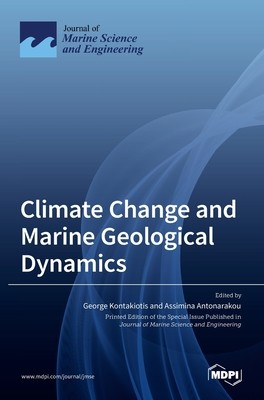
- We will send in 10–14 business days.
- Publisher: MDPI AG
- ISBN-10: 3036516980
- ISBN-13: 9783036516981
- Format: 17 x 24.4 x 1.6 cm, hardcover
- Language: English
- SAVE -10% with code: EXTRA
Climate Change and Marine Geological Dynamics (e-book) (used book) | bookbook.eu
Reviews
Description
The tendency for climate to change has been one of the most surprising outcomes of the study of Earth's history. Marine geoscience can reveal valuable information about past environments, climates, and biota just before, during and after each climate perturbation. Particularly, certain intervals of geological records are windows to key episodes in the climate history of the Earth-life system. Ιn this regard, the detailed analyses of such time intervals are challenging and rewarding for environmental reconstruction and climate modelling, because they provide documentation and better understanding of a warmer-than-present world, and opportunities to test and refine the predictive ability of climate models. Marine geological dynamics such as sea-level changes, hydrographic parameters, water quality, sedimentary cyclicity, and (paleo)climate are strongly related through a direct exchange between the oceanographic and atmospheric systems. The increasing attention paid to this wide topic is also motivated by the interplay of these processes across a variety of settings (coastal to open marine) and timescales (early Cenozoic to modern). In order to realize the full predictive value of these warm (fresh)/cold (salty) intervals in Earth's history, it is important to have reliable tools (e.g., integrated geochemical, paleontological and/or paleoceanographic proxies) through the application of multiple, independent, and novel techniques (e.g., TEX86, UK'37, Mg/Ca, Na/Ca, Δ47, and μCT) for providing reliable
hydroclimate reconstructions at both local and global scales.
EXTRA 10 % discount with code: EXTRA
The promotion ends in 17d.14:08:15
The discount code is valid when purchasing from 10 €. Discounts do not stack.
- Publisher: MDPI AG
- ISBN-10: 3036516980
- ISBN-13: 9783036516981
- Format: 17 x 24.4 x 1.6 cm, hardcover
- Language: English English
The tendency for climate to change has been one of the most surprising outcomes of the study of Earth's history. Marine geoscience can reveal valuable information about past environments, climates, and biota just before, during and after each climate perturbation. Particularly, certain intervals of geological records are windows to key episodes in the climate history of the Earth-life system. Ιn this regard, the detailed analyses of such time intervals are challenging and rewarding for environmental reconstruction and climate modelling, because they provide documentation and better understanding of a warmer-than-present world, and opportunities to test and refine the predictive ability of climate models. Marine geological dynamics such as sea-level changes, hydrographic parameters, water quality, sedimentary cyclicity, and (paleo)climate are strongly related through a direct exchange between the oceanographic and atmospheric systems. The increasing attention paid to this wide topic is also motivated by the interplay of these processes across a variety of settings (coastal to open marine) and timescales (early Cenozoic to modern). In order to realize the full predictive value of these warm (fresh)/cold (salty) intervals in Earth's history, it is important to have reliable tools (e.g., integrated geochemical, paleontological and/or paleoceanographic proxies) through the application of multiple, independent, and novel techniques (e.g., TEX86, UK'37, Mg/Ca, Na/Ca, Δ47, and μCT) for providing reliable
hydroclimate reconstructions at both local and global scales.


Reviews